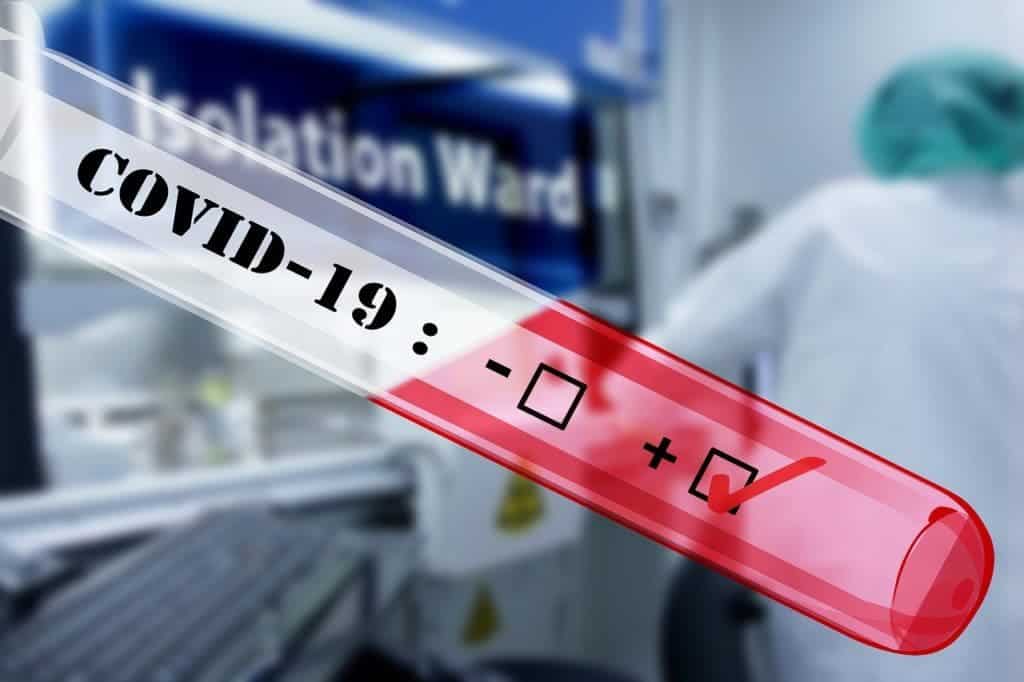If you live close to an area where COVID-19 cases have been reported or if you have experienced symptoms such as fever, shortness of breath, or cough, you might suspect you are infected. This might be a good time to get tested — but how does a coronavirus test work?

You can’t perform a coronavirus test yourself. First, a doctor or health worker will swab the back of your throat with a sterile Q-tip in order to collect a sample of the secretions being produced there.
The throat swab is then run through polymerase chain reaction (PCR) testing that amplifies selected sections of DNA or RNA, replicating them millions of times until they are large enough to be detected by a special lab instrument. This highly efficient method enables scientists to identify infectious agents or highlight genes in ancient genomes even when working with minute quantities of DNA or RNA.
The story of how PCR got invented is actually quite inspiring. Kary Mullis, the scientist who first performed it, got the idea in 1983 while he was driving his motorcycle one night down the Pacific Coast Highway 128. Mullis — who at the time was employed for a large biotech company charged with making short chains of DNA for other researchers –was toying in his mind with new ways of analyzing mutations in DNA when he realized that amplifying any DNA region was possible. In 1993, he shared the Nobel Prize in chemistry with Michael Smith.
Today, PCR is a cornerstone technology used by scientists working in the lab or at biotech giants like Stilla Technologies to diagnose genetic diseases, do DNA fingerprinting, identify bacteria and viruses, study human evolution, clone the DNA of an Egyptian mummy, establish paternity or biological relationships, and much more.
When identifying a viral infection — such as the new coronavirus, known as SARS-CoV-2, that causes COVID-19 — PCR tests look for specific genetic material that is unique to the virus’ genome.
At the lab, the nucleic acid is extracted from your sample and amplified to produce a larger sample.
SARS-CoV-2’s genome is made of 30,000 nucleotides — the building blocks of DNA and RNA. However, not all nucleotide sequences are critical for diagnosis. PCR tests developed at the University of Washington, for instance, look for just 100 nucleotides that are specific to SARS-CoV-2, including two genes that are specific to the novel coronavirus.
If both genes are detected the test is positive; a single gene means the test is inconclusive; while the absence of both genes renders a negative test result.
There are also serological tests that look for antibodies produced by the body to fight off the virus. Instead of sampling the back of the throat, a health worker will draw a blood sample for this kind of test.
Antibody tests for COVID-19 have already been developed in Singapore and China.
The advantage of a serological test over a PCR test is that COVID-19-specific antibodies are still present in a person’s blood even after recovery. This way, doctors can diagnose recovered cases even when a person was not aware they were infected with SARS-CoV-2. Most cases of COVID-19 are mild, so many people might get infected with the virus and then get well, thinking they merely had the flu or some respiratory illness. In fact, many cases of COVID-19 are asymptomatic. A PCR test, on the other hand, can only detect the presence of the virus if the patient is currently sick.
Both kinds of tests can fail, however, if they’re administered in the very early phase of infection. The viral load may be too low for PCR to detect SARS-CoV-2 genes or the body may not have had enough time to produce antibodies against the virus.
Testing is crucial to curbing epidemics
PCR and antibody tests take just a few hours to run and a complete diagnosis can be provided within 24-72 hours.
While there is currently no vaccine or specific treatment for COVID-19, that doesn’t mean testing is pointless. In fact, early testing is crucial to curbing the spread of infection responsible for COVID-19. When a person is diagnosed with a contagious disease, they can be placed under quarantine, thus avoiding infecting other people.
South Korea now has more people leaving hospitals after recovery than they have new cases — but only after they imposed drastic containment measures and performed over 240,000 tests. Elsewhere, the U.S. is woefully lagging behind, having performed a little more than 7,000 Covid-19 tests as of March 11.


